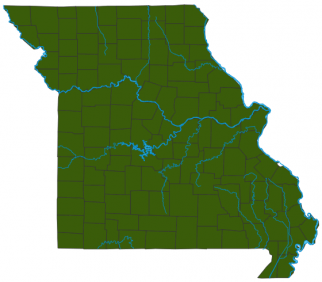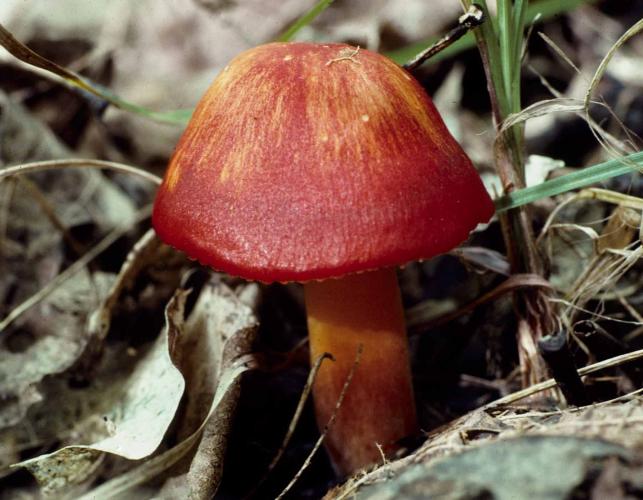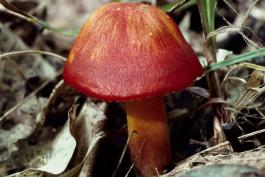
Moist, scarlet cap with waxy, reddish yellow gills; orange-red stalk. Grows on the ground in mixed woods. July–October. Cap conical; scarlet to blood red; texture smooth, moist. Gills broad; spacing close to almost distant; bright reddish yellow; gills attached; thick, but with thin edges, waxy. Stalk sides equal; orange-red, lighter toward the base; texture moist; hollow. Spore print white. Spores magnified are elliptical, smooth.
Lookalikes: Other Hygrocybe species.
Cap width: ½–2 inches; stalk length: 1–3 inches; stalk width: ⅛–⅜ inch.

Statewide.
Habitat and Conservation
Grows on the ground in mixed woods.
Status
Edible.
Life Cycle
This species exists most of the time as a network of fungal cells (mycelium) in the soil, digesting and decomposing organic matter. When ready to reproduce, the mycelium forms the mushroom aboveground—this is the reproductive structure. Spores are produced in the gills and are released to begin new mycelia elsewhere.
Human Connections
Mushrooms decorate nature the way wildflowers do, adding to our pleasure on hikes. The scarlet waxy cap is a cute mushroom, and it's well-named. It does look like a little red cap, and the gills really are waxy. (Rub them between your fingers, and you'll have proof.)
Ecosystem Connections
This is one of the many fungus species that live on decaying plant materials. It and other such saprobic fungi play an incredibly important role in breaking down the tough materials plants are made of and returning those nutrients to the soil.


Mushrooms are a lot like plants, but they lack chlorophyll and have to take nutrients from other materials. Mushrooms are neither plants nor animals. They are in a different kingdom — the fungi. Fungi include the familiar mushroom-forming species, plus the yeasts, molds, smuts, and rusts.
Always be cautious when eating edible mushrooms. Be absolutely sure of the ID, and only eat a small amount the first time you try it to avoid a reaction..





















